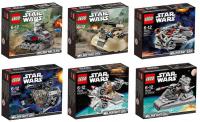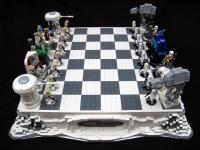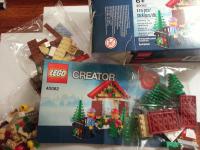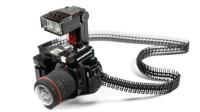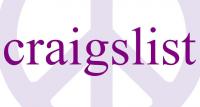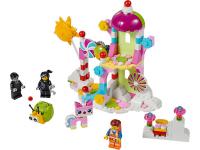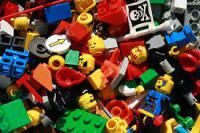

There are many things that can make a set flop, like an unpopular theme, bad minifigures, poor design, etc. We must know the good from the bad, learn from the past, and carefully evaluate all advice given to us in able to succeed in LEGO investing.
Unsuccessful Themes of the Past
With a disappointing CAGR of -7.90%, Prince of Persia is one of the biggest failures in history. The unsuccessful movie and the big "Disney" logo on the boxes do not help this theme at all.
Set Name Retail Price Number of Pieces Market Value (New) CAGR 7569 Desert Attack $10.99 67 $11.26 0.61% 7570 The Ostrich Race $19.99 169 $13.94 -8.62% 7571 The Fight for the Dagger $29.99 258 $22.51 -6.92% 7572 Quest Against Time $49.99 506 $33.59 -9.46% 7573 Battle of Alamut $79.99 821 $66.88 -4.38%
As you can see, you can still buy most of the sets from this theme below retail. Unlike Pirates of the Caribbean, there is not one successful set in Prince of Persia.
What went wrong?
I have to admit that I really liked the Prince of Persia theme from a collector's standpoint. The sets and minifigures were both designed very well, and the surplus of tan pieces made for great part packs. Unfortunately, the good design was not enough to make this theme a winner.
Prince of Persia received a 5/10 from most critics and left many fans disappointed. The idea of creating a movie from a video game itself was a random idea that did not turn out well. The movie was the downfall of these sets.
World Racers was an un-licensed theme that performed slightly better than Prince of Persia. The background story did not make sense and the idea of racing around the world while throwing explosives at each other was... weird. There were lots of vehicles, but not much variety. There was not much AFOL or TFOL appeal in this theme. World Racers was targeted toward kids 7-12, and it tends to be the TFOLs and AFOLs that fuel the secondary market.
Set Name Retail Price Number of Pieces Market Value (New) CAGR 8863 Blizzard's Peak $59.99 504 $38.75 -10.35% 8864 Desert of Destruction $89.99 961 $75.73 -4.22% 8896 Snake Canyon $9.99 57 $14.78 10.29% 8897 Jagged Jaws Reef $19.99 191 $14.96 -6.99% 8898 Wreckage Road $29.99 292 $26.40 -3.14% 8899 Gator Swamp $39.99 354 $30.05 -6.89% If you look closely at this theme, you will notice a similarity to Prince of Persia. Only the smallest set has a positive CAGR.
What went wrong?
This was a kid's theme. There was not much variety, as all the sets were vehicles that were either green or red. I believe that these two reasons are why these sets failed. There is nothing wrong with a kid's theme, but when it does not have much effort put into it, the results can be disastrous.
I do not want to get too off-topic by talking about a theme completely different from the others, but I would like to touch on the LEGO Games theme before we move on.
If you would look at the overall CAGR of this theme, you would find that it is 3.37%. I was very surprised when I saw this because I knew that there were not many sets in this theme with a positive CAGR. I will explain the positive CAGR later.
The one reason that the Games theme failed is because it does not stay true to the LEGO system. People buy LEGO to build, not to play board games. Even though the idea of a Games theme was creative and had a lot of potential, it never really took off because they had the wrong audience.
The reason for the positive CAGR of the theme is because it was such a failure. I know that sounds like an oxymoron, but it will make sense when I explain it.
LEGO launched this theme with much enthusiasm and advertising. Some of the most well-known sets include Minotaurous and Creationary. LEGO had planned to make some more board games with licenses. One was Star Wars: The Battle of Hoth, which was only available in the UK. Two others, The Battle of Helm's Deep and Batman. The last two never made it to the shelves. LEGO decided to cancel the sets due to the lack of success the LEGO Games theme had experienced. As to how some got into the hands of resellers, I do not know, but you should be able to find a small amount on eBay with prices ranging from $150 to $300 and CAGRs at 100 to 200 percent. If it had not been for these sets, the Games theme would be right next to Prince of Persia and World Racers.
I know that there were many more themes that failed (e.g. Toy Story, Atlantis, etc.) As with my previous article, the goal here is not to list every single set that failed in LEGO history. The goal is to list enough data that you can know which sets will fail and which sets will succeed.
Analyzing the Data
After researching these themes, there are a few conclusions that can be made.
A set or theme can be a failure if...
#1. ...the movie the theme is based on is unpopular
#2. ...the theme is targeted toward kids and does not have much AFOL or TFOL appeal
#3. ...the design is poor
#4. ...the theme does not stay true to the LEGO system
The list goes on and on, but the main ones that affect a set the most is reason #1 and #2. #1 was clearly the reason that Prince of Persia failed, while #2 is the reason that themes like Toy Story and Cars failed. Reason #3 is why we find bad sets in a great theme, and reason #4 is why Clikits (for those of you who do not know what "Clikits" is, it was basically a jewelry theme.) and Games failed. This should give you enough information to discern the good from the bad.
Possible Failures of the Future
Predicting failures is much harder than predicting success. When looking for failures, you have to look at how popular the movie is that it came from, the minifigures in the set, and how big sales have been in the set or theme's lifetime. When Toy Story retired, I can remember massive discounts. Even at huge discounts, it was hard to get rid of the sets. POTC is one theme that I would consider a failure, but that does not mean that there were a few successes in the theme. No matter how unpopular the movie or theme is, people like ships and trains. Everyone can remember the Queen Anne's Revenge and the Black Pearl. Despite the huge discounts on these sets and the failures in the rest of the theme, these two sets were a huge success after the theme retired.
#1. Galaxy Squad
This is a very controversial theme. Some people think that these are the best LEGO sets ever made, and others think that they are lame. I think that they are neat, but I would not invest too much money in them. The previous Space Police and Alien Conquest themes failed. I think that TLG put more effort in these two themes than Galaxy Squad. What makes this theme different? Is there any difference? I would say yes. The Galaxy Squad sets have great designs. If there is anything that will save this theme from failure, it is that. I am not saying that these are terrible investments, just that there are better themes to put your money on.
#2. Lone Ranger
Most of the Lone Ranger sets are well designed, but the Disney logo on the box makes the sets unstable investments. There are many examples of sets that were well designed with exceptional minifigures that failed with the Disney logo on the box. POTC, Prince of Persia, and Toy Story come to mind. Like I said before, why invest in possible failures when there are so many better options out there?
I think that Lone Ranger will be similar to POTC. I believe that the train will be a winner. This is just my opinion from what I have researched. You may or may not have success using my opinion, because it is just a human opinion.
Summing it Up
As you can see, there are not nearly as many investmenfailures as there are successes, but when failures come, we must be able to identify them and steer clear from the bad and the ugly.
- Read more...
-
- 0 comments
- 9,512 views


